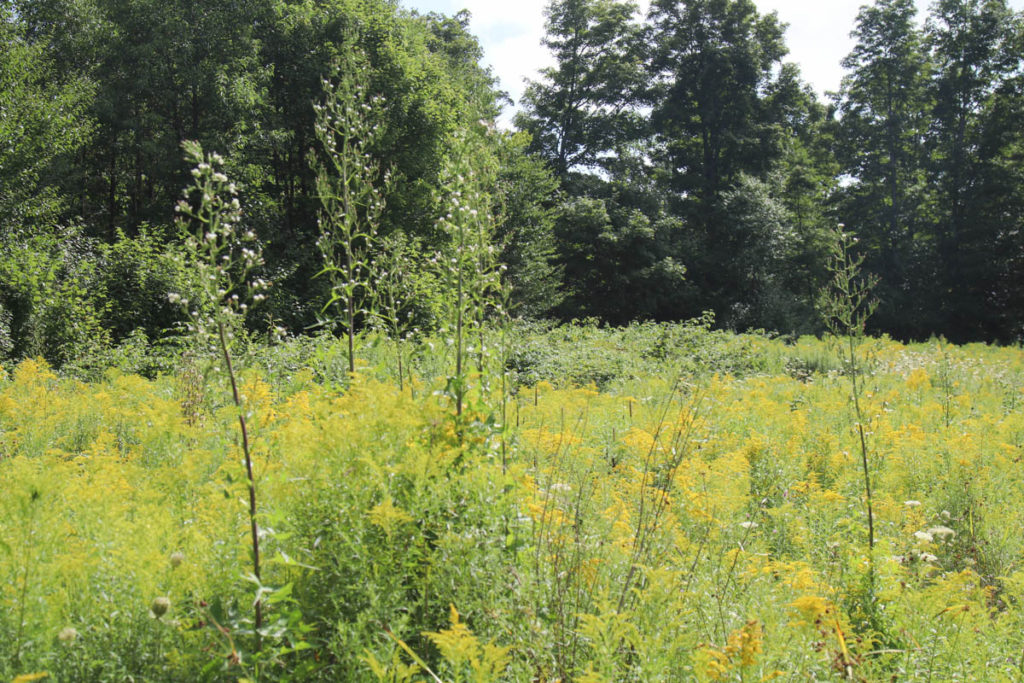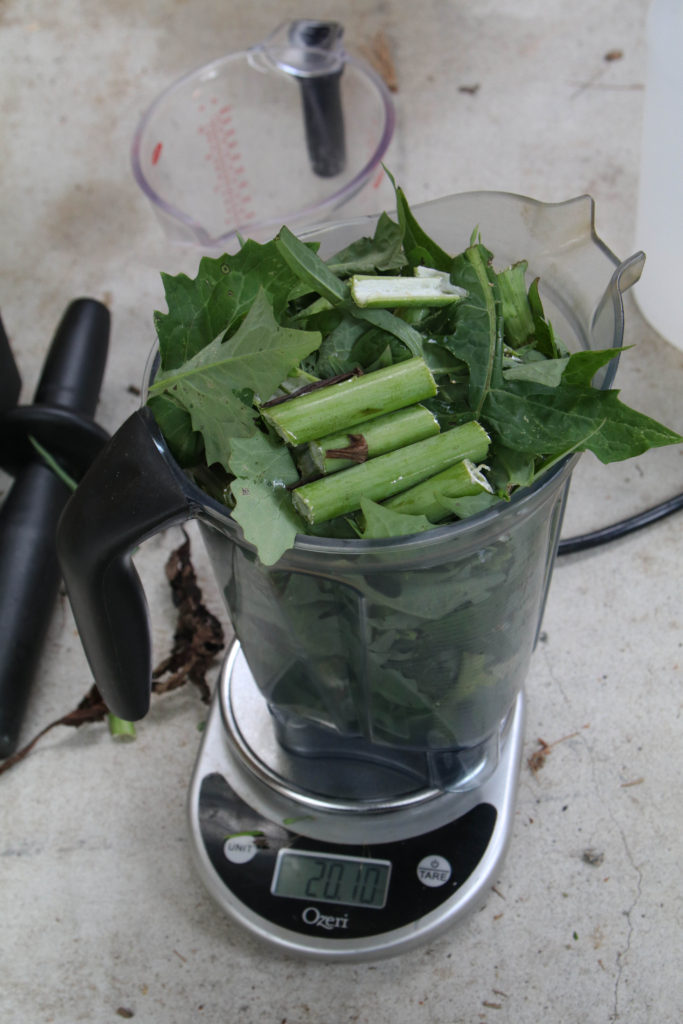
Pre-Prelude
If you are just interested in how to prepare this concentrated tincture, you can skip to the bottom of the page for the directions. There is also a link for a handout with the instructions that can be printed out.
Prelude and Story
Many years ago, I heard that Wild lettuce (Lactuca species) tincture was a strong pain reliever. Intrigued by this, I made various tinctures, but they generally tasted weak and were not very effective at reducing pain. As a first aid herbalist, pain remedies are an important part of my apothecary, so I tried to make stronger preparations. About 10 years ago, I made a much stronger Wild lettuce preparation in a similar manner to the one written about here. I posted the instructions and since then, many people have requested that recipe. After running out of the original batch, I finally found the time and plants to make more. And since it is 2019, I made a blog about it.
There are a few reasons I had not made it since my earlier endeavors. One is that I still had some from the original batch. Second, even after making a more concentrated form, I did not think that the Wild lettuce tincture was as strong as some of the other anodyne (pain-relieving) medicines I prepare. But perhaps the main reason it took so long is that it is a time-consuming process that entails traveling with a lot of equipment.
So on a recent class field trip to the Adirondacks. I rustled up all the gear to try again. From a visit the previous year, I had noted where there were good-sized stands of Wild lettuce to gather from.
One of the disappointing aspects of this blog is that I have not used this tincture enough yet to make a case for it being a more potent medicine or not. But give me a few months, and I will be able to report the results.
Basic Botany
Wild lettuce is in the Asteraceae, the sunflower family. The plant I used for this preparation is Lactuca biennis. Since there are a number of Lactuca species, which are all called ‘Wild lettuce,’ I will often use the full botanical name in this blog.
There are 10 species of Wild lettuce that grow in the United States, both native and introduced. Most of them are medicinal as they exude scads of latex, which is likely where much of the medicinal properties lay. The genus Lactuca is derived from ‘lac’, the Latin word for milk, alluding to the white late (Similar words: lactation, galactagogue)

A Few Other Species of Wild Lettuce


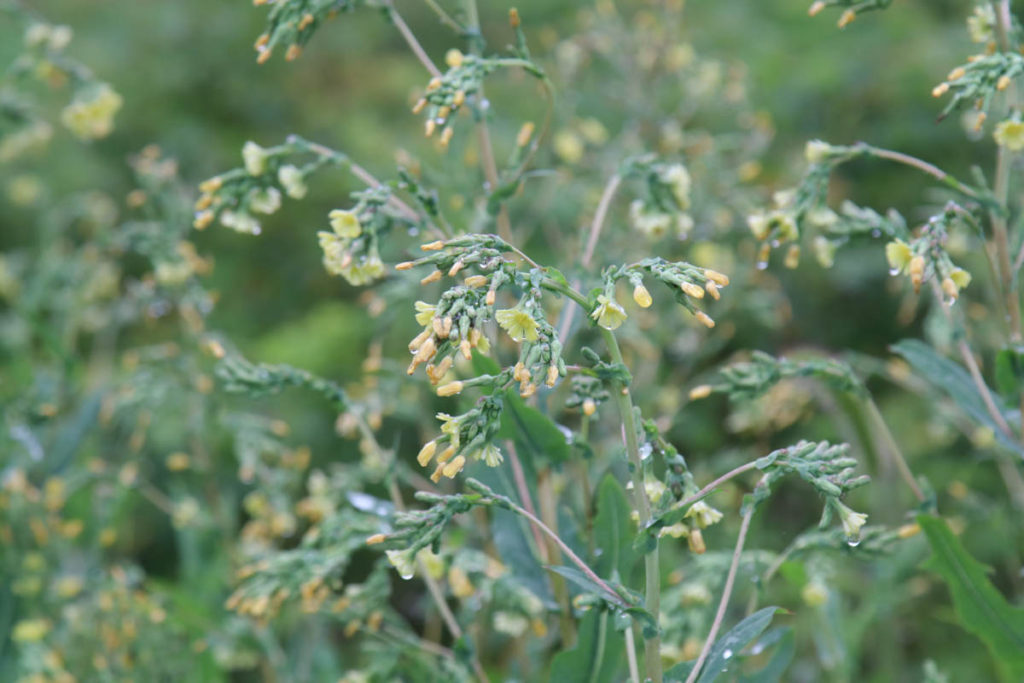
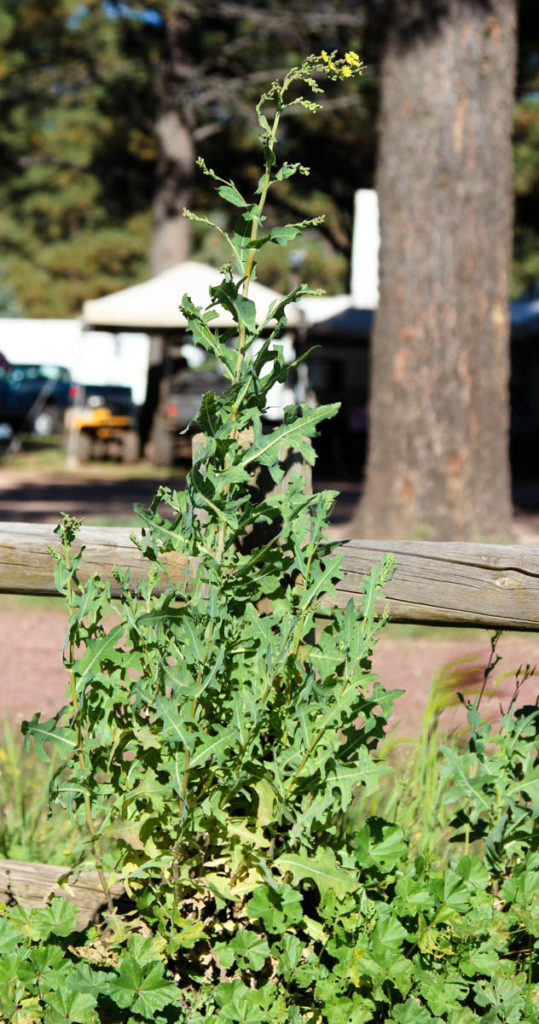
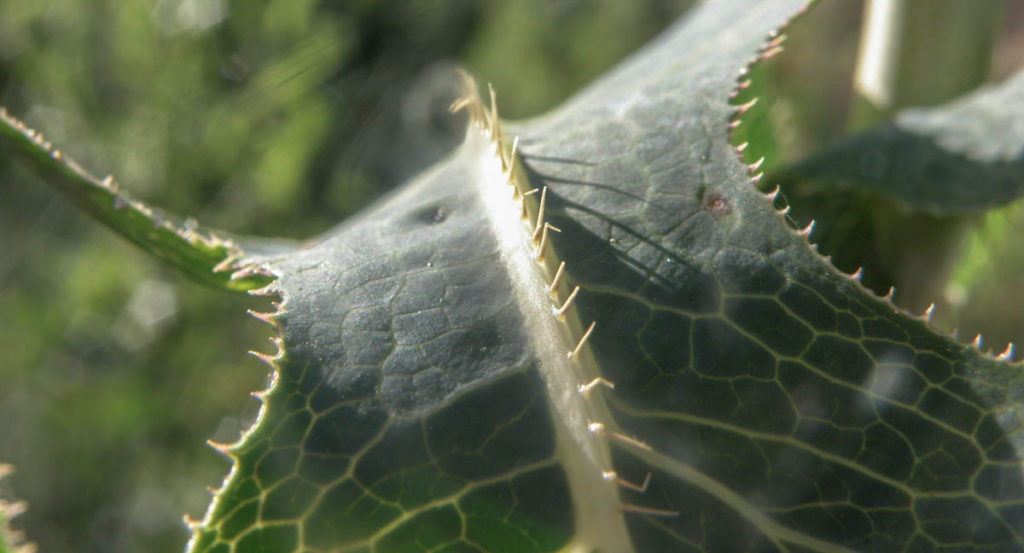
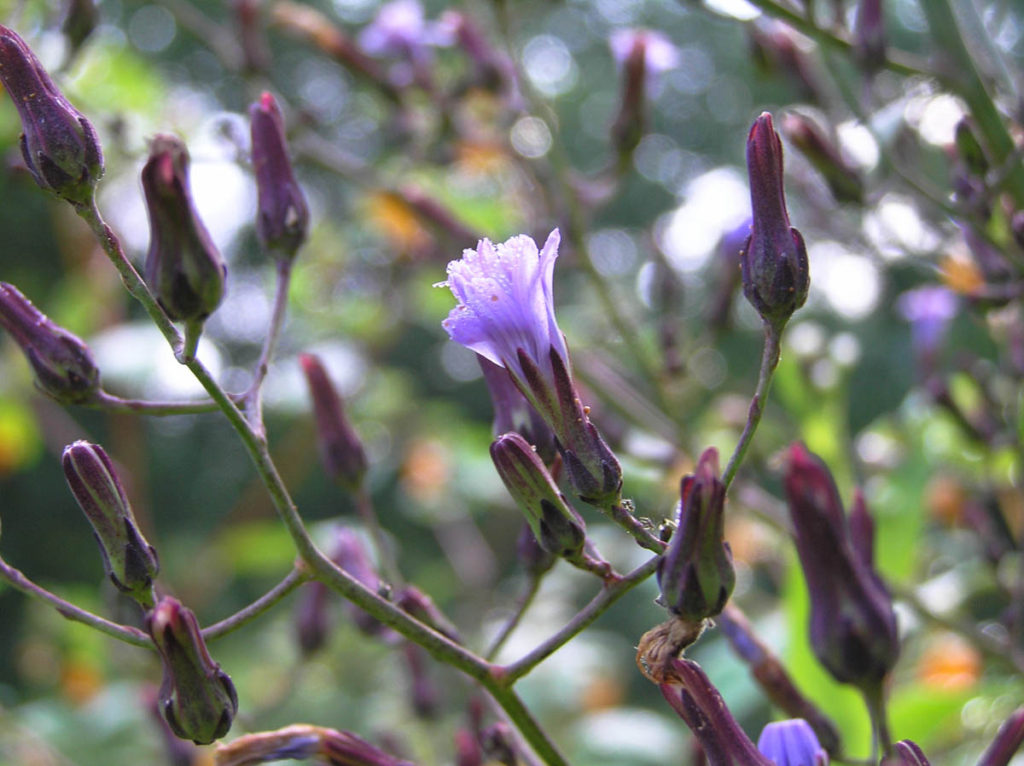
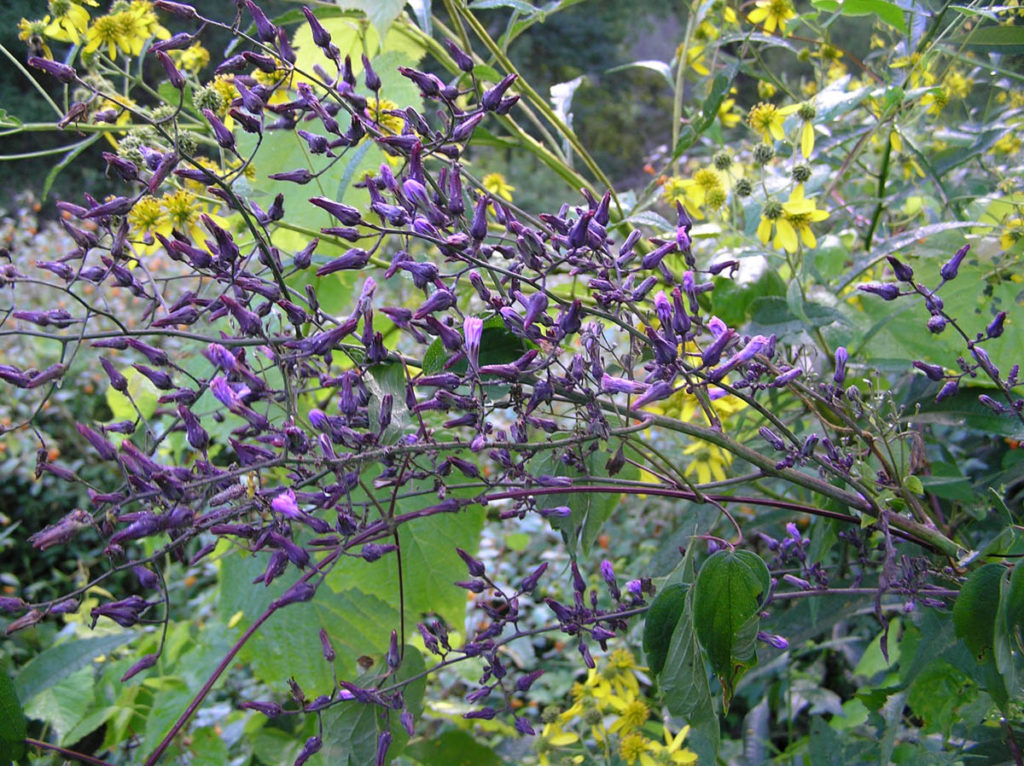


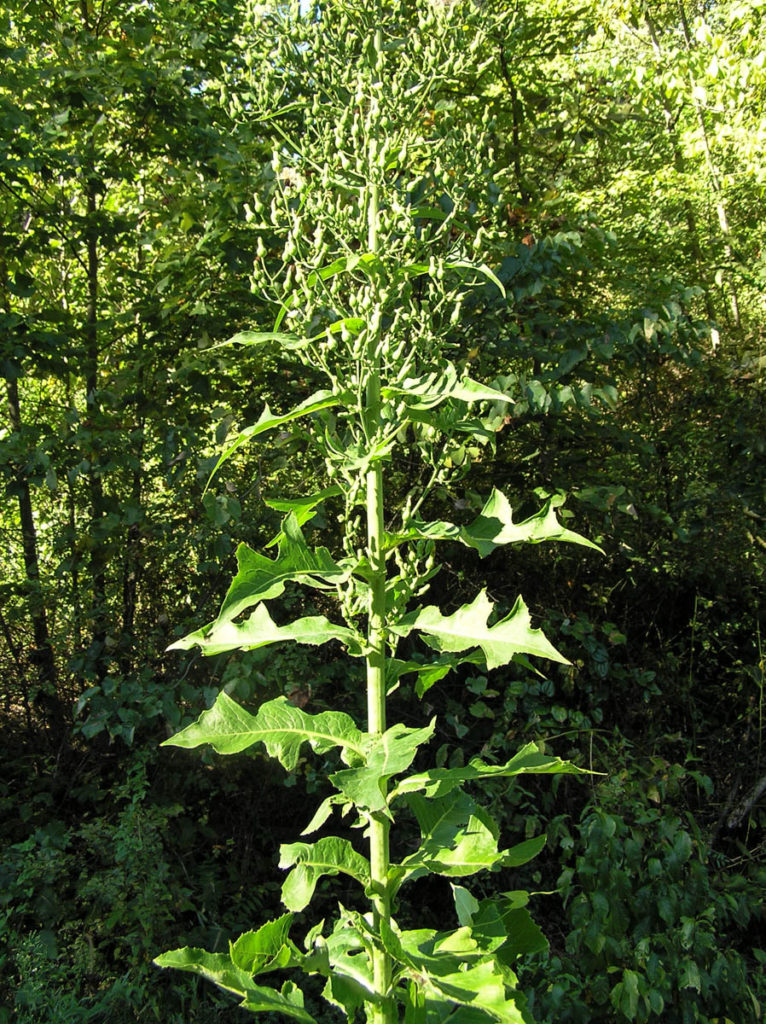

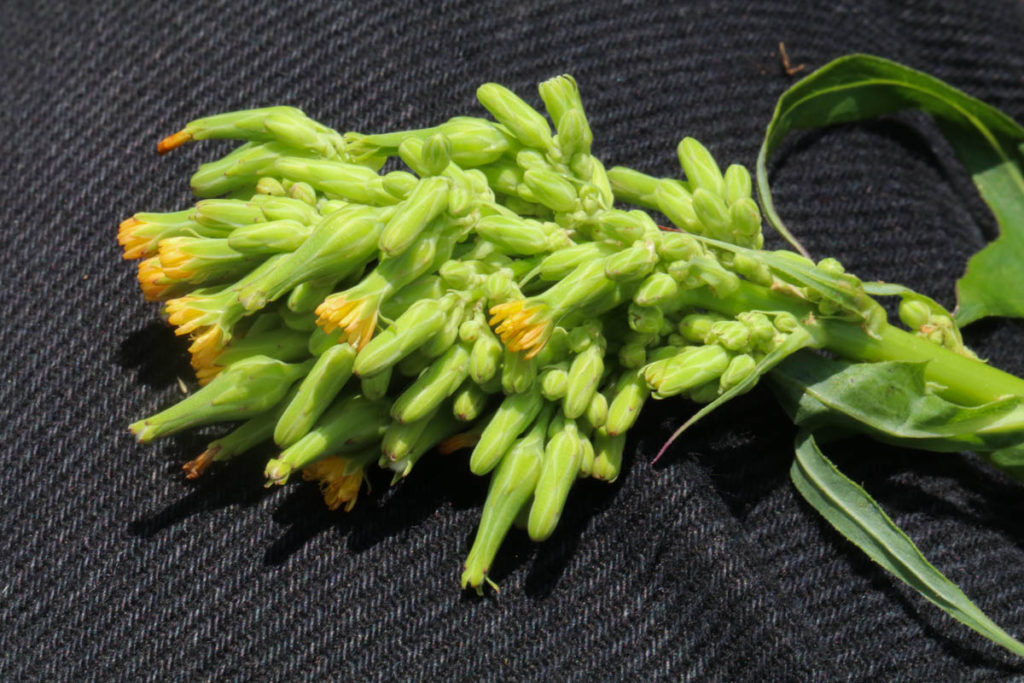
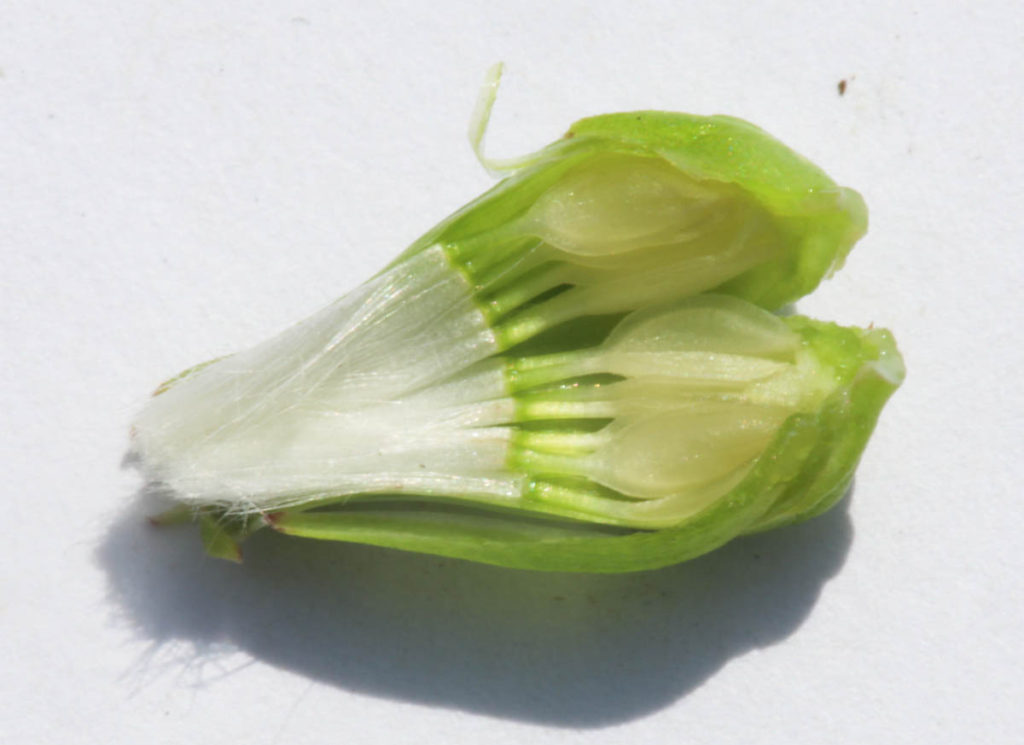
Wild Lettuce-Lactuca Biennis
This is the species I used for making the concentrated tincture
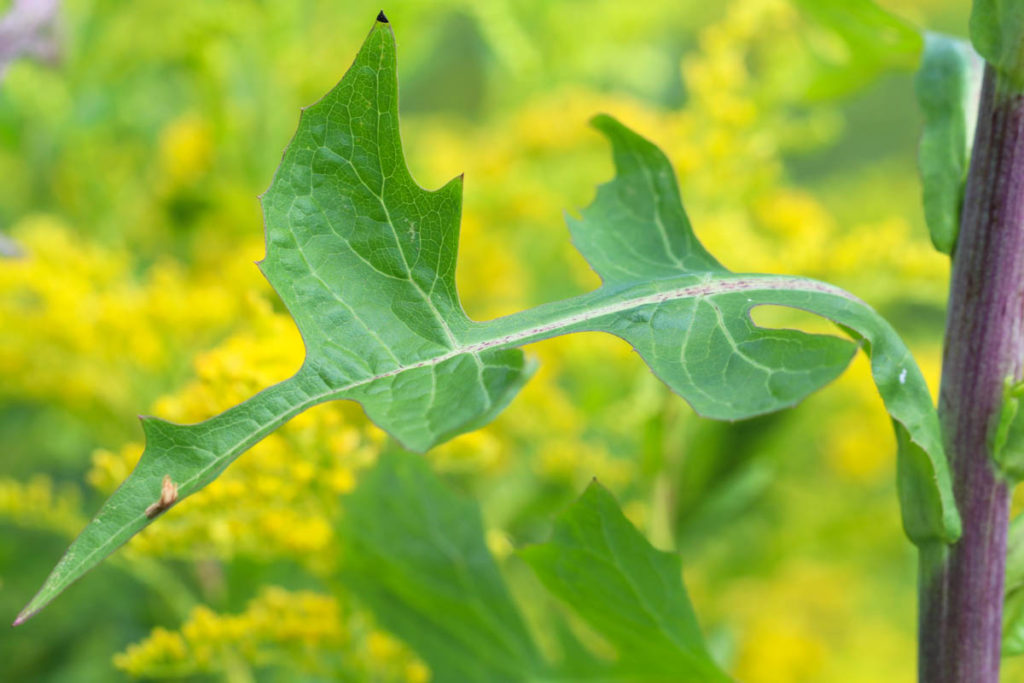



Preparing the Medicine
A Preliminary Note
I am continually experimenting with making plant-based medicines, and this can sometimes lead to needless complexity. If, after reading through this article, you realize that you can make an effective medicine by leaving out or simplifying these steps, please do so and let us know how the final product came out. You can leave your information and notes in the comments section.
Herbal medicine is an evolving skill. As herbalists and medicine makers, we should continue to play around and design new ways to prepare plants as medicines while not disregarding traditional and former ways they were prepared.
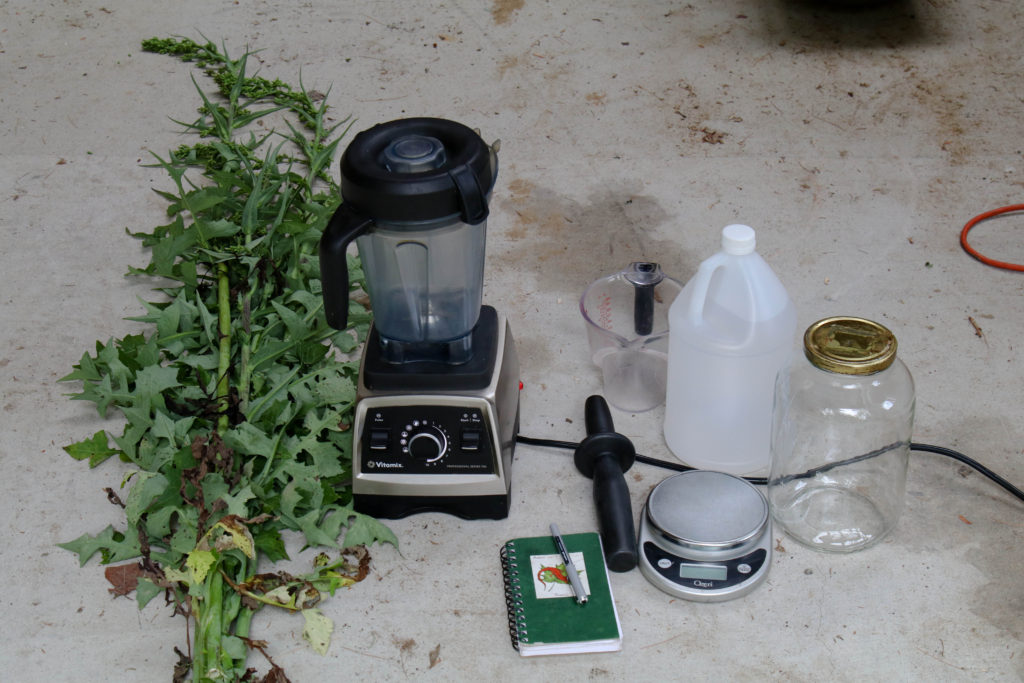
The Equipment and Supplies
Gear List (in alphabetical order). Most of these items are common and not too expensive, except for the tincture press and blender.
- Blender (Vitamix)
- Calculator
- Cutting board
- Container-to to catch the pressed tincture
- Ethanol 95%
- Jars
- Labels and pen
- Measuring cup
- Notebook-to record observations and notes
- Pressing cloths-for tincture press
- Rags-it can get messy
- Scale-to weigh out herbs
- Tincture press
The Tincture Press
I know that these are difficult to find and very expensive, but for me, they are fundamental in processing liquid medicines. This is because they press out a lot more liquid than other equipment, such as a cider press or hand wringing. And it is not just a matter of getting the most out of it, but by pressing the herb out under a lot of pressure, it also releases many of the constituents that would stay trapped in the herb.
I have two tincture presses, one that I lend out to students and for travel (the one seen here) and a larger heavier stay-at-home press that I have been using for nearly 20 years. To learn more, please see my tincture press blog.
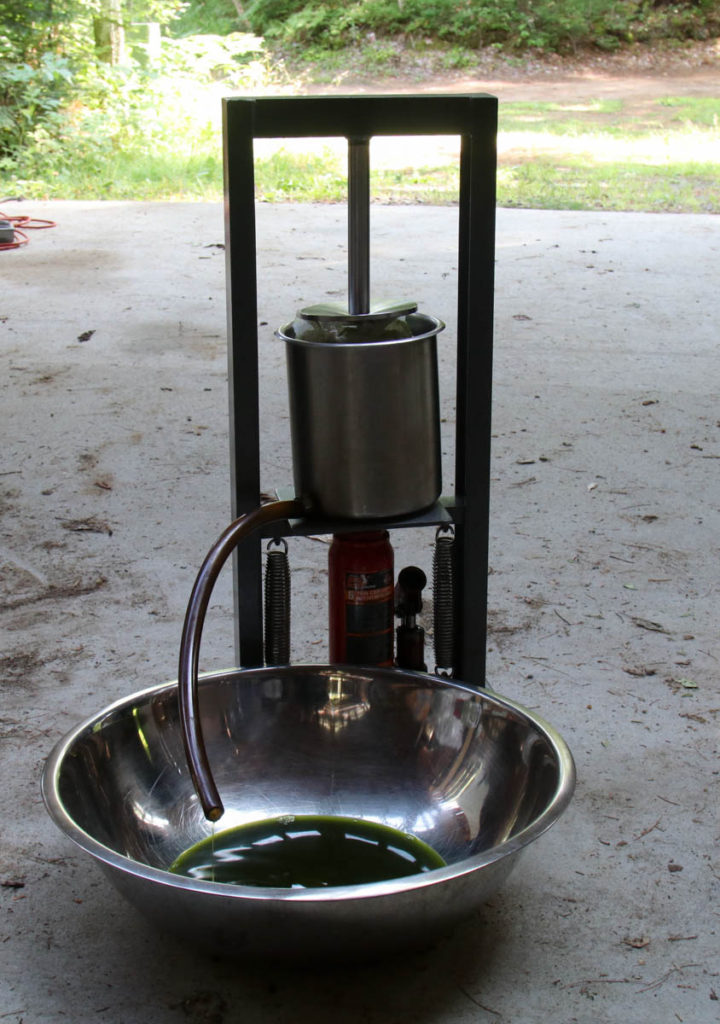
The Blender
I find blenders useful for making herbal medicines. I use a Vitamix. They are quite expensive but have a strong motor, which is especially helpful in breaking down hard plant material such as roots and seeds. Blenders are good for reducing plants to a pulpy mass which allows the menstruum to permeate the plant tissue. They also reduce the size of the plant material, helping to concentrate the tincture.
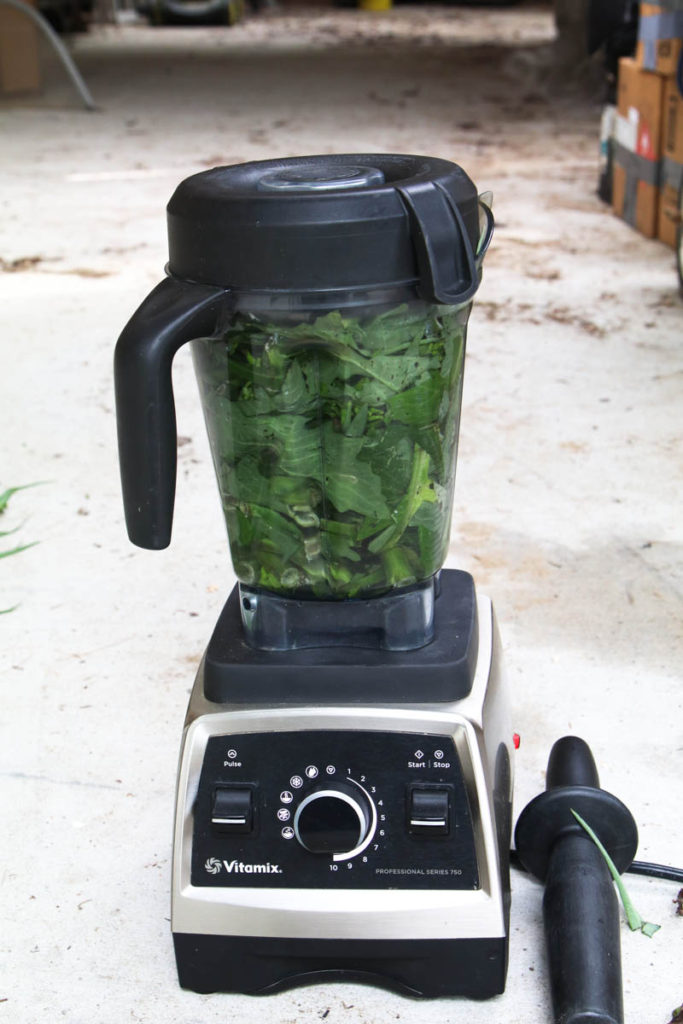
Finding and Gathering the Wild Lettuce
The first step is scouting locations where the Wild lettuce (L. biennis in this case) can be ethically gathered. Since I come to this region yearly, I was able to find an area where there were numerous plants away from pollution and not likely to be a gathering spot for other wildcrafters. I wanted it to not be too far away from where I was staying as I knew I would be gathering it on a daily basis and wanted to process the plants when they were very fresh.

Why Lactuca Biennis
This is a common species found in the Adirondacks. And while Lactuca canadensis (with yellow flowers) is also common, I wanted to use just one species to help judge its effectiveness.


A Few Definitions
- Menstruum-the fluid used to prepare an herbal medicine. For example, the menstruum for tinctures is ethanol and the menstruum for tea is water.
- Ethanol-the ‘drinking’ type of alcohol used in preparing tinctures. I use the words ethanol and alcohol interchangeably in this article
Notes on Medicine Making
There are two sets of numbers associated with preparing tinctures, they are a ratio and an alcohol percentage. The ratio is the proportion of plant material weight to menstruum volume and is expressed like this; plant weight: menstruum volume. For instance, a tincture that is 10:20 is 10 ounces herb weight to 20 ounces of ethanol volume.
The percentage is the percentage of any given alcohol, such as Vodka, which is often between 40%-50% alcohol. To make a ‘proof’ a percentage, just divide it in half. (An example; 80 proof vodka is 40% alcohol).
With Wild lettuce tincture, It was mainly prepared at 1:2 in 95% ethanol. The reason for both of these numbers is due to the amount of water in the plant and the solubility of the white latex. In general, the smaller the difference between the two ratio numbers, the more potent the medicine. Since I was able to reduce the Wild lettuce material in pulp with the blender, I was able to get it to 1:2. (I initially did it at 1:1.6, which is even more potent, but I found it easier to bring it up a little to 1:2 later). The alcohol percentage is largely based on how much water is in the plants. Ethanol pulls water out of a plant and, therefore, helps move constituents out of the plant material. In general, the more water in the plant, the higher the alcohol percentage needed. Also, the white latex in Wild lettuce is not very water-soluble, which is another reason for the 95% alcohol.

Day 1 August 8, 2019
I went to the field that I had previously scouted out and gathered 4 large plants. I brought them back while they were still fresh and oozing latex. I then chopped them up, weighed them, put them in the blender, and blended them at 1:1.6 in 95% ethanol.

Day 2 August 9, 2019
In the morning, I transferred the ingredients from the blender to a jar. It had taken on a nearly solid foamy texture.
I then went out and gathered another 5 large plants and blended them similar to yesterday. I upped the ratio to 1:2 as it was a little easier to work with and kept the alcohol at 95%. I let the mix sit in the blender.
This step could have been on Day 1, but I was still trying to figure out how much medicine I wanted to make.
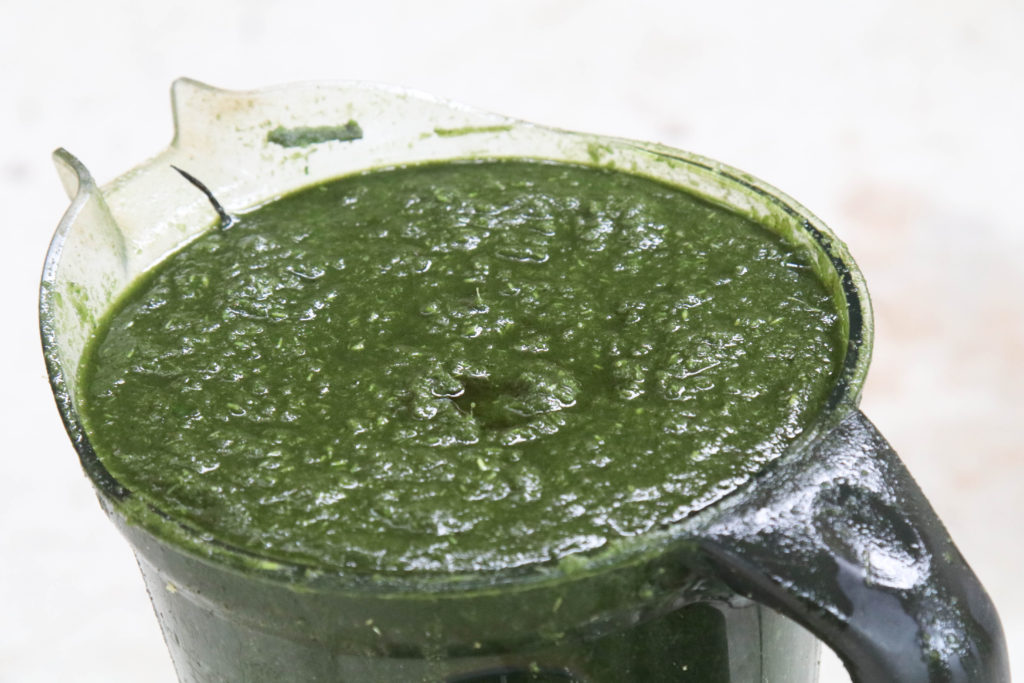
Day 3 August 10, 2019
I pressed out the batch from Day 1 and moved the contents of the blender from yesterday into a jar. I then gathered 4 more large plants, brought them back while fresh, chopped them up, and put them in the blender. This time the menstruum was a mixture of half 95% ethanol and half the pressed tincture from Day 1. I blended this and poured it out in a jar.
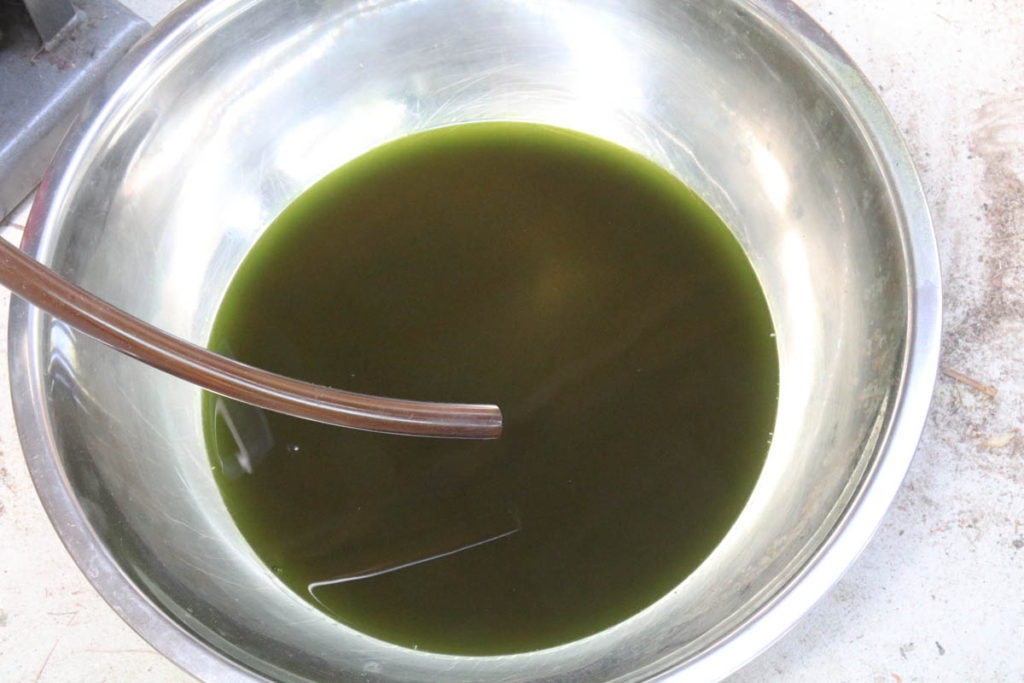
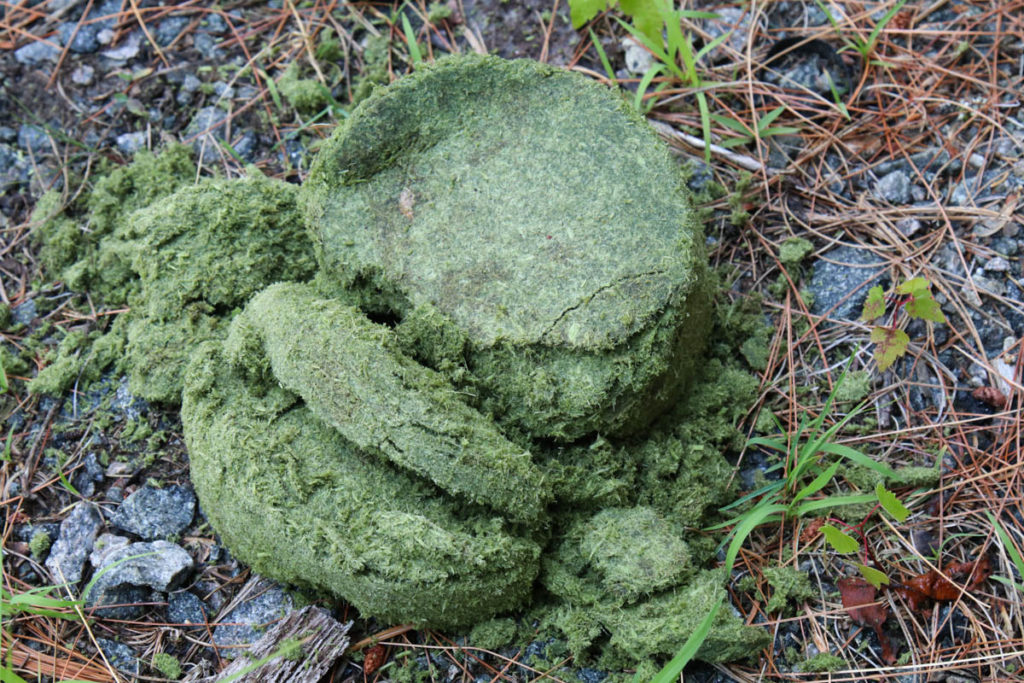
Day 4 August 11, 2019
In the morning, I pressed out the tincture made on Day 2. I then went back to the Wild lettuce patch and gathered around 8 more plants. This would be my final time gathering plants for this tincture. I blended all of these the same as yesterday, which was at 1:2 in a mixture of half 95% ethanol and the other half was the pressed tincture from the previous batches. I poured these back and forth in the jars to try and keep them similar in composition.
At this point, I was finished for the time being, as I was going to let them sit for at least 2 weeks before pressing them out for the final time.

6 Weeks Later
After letting them sit for 6 weeks, I pressed them out for the final tincture. Two weeks is the minimal amount of time for them to macerate, but waited a while until I had a chance to press them out.
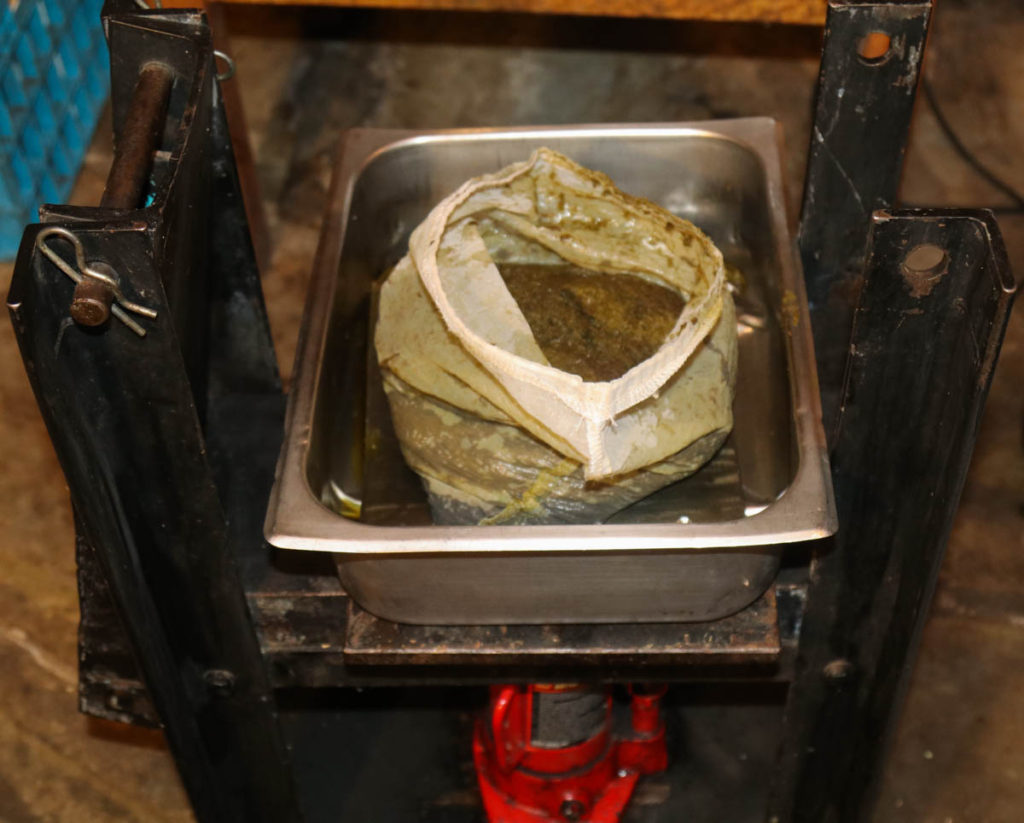
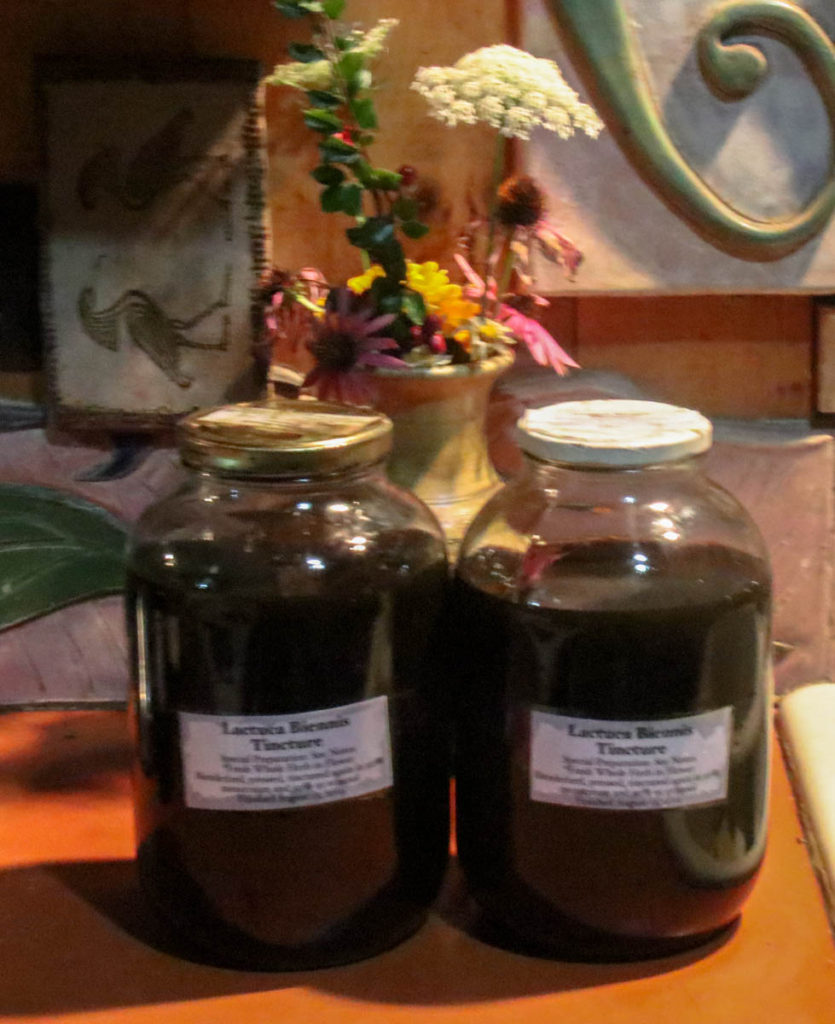
November 2019
As of early November 2019, I have not tried this medicine enough to know how well it works. I can unequivocally say that it is very bitter and likely the strongest tasting Wild lettuce tincture I have made.
At this point, I will start using it with folks and obtaining results. I hope the strength of the taste is proportional to the potency of the medicine.
How will I use this Medicine
Wild lettuce tincture is commonly used as a general pain reliever with some sedative properties. To me, it is a medium strength pain reliever somewhere between Hops and Skullcap, though it is difficult to know how strong it can be, as most of the preparations I have tried (including my own) were not that strong.
Step by Step Instructions for Preparing a Concentrated Wild Lettuce Tincture
Preparation
- Find a location where there are enough plants to respectfully and responsibly gather
- Have all your equipment and supplies ready (see list)
- Set aside a couple of days where you can commit to preparing the tincture for an hour or so each day.
Day 1
- Gather whole fresh Wild lettuce plants
- Cut up the fresh plants and place them in the blender
- Blend them in 95% ethanol at a 1:2 ratio
- Pour into a separate container
- Let the blended plant parts sit in the liquid for at least 48 hour
Day 2
- Gather more Wild lettuce plants
- Blend at 1:2 in 95% alcohol
- Pour into a separate container and let sit for at least 48 hours
- This step can be skipped if making less medicine, or you can just gather more plants and prepare more medicine on Day 1
Day 3
- With a tincture press, press out the tincture made on Day 1
- Clean the container and pour the menstruum back in
- Gather more fresh plants
- Cut up the fresh plants and place them in the blender
- Using a 1:2 ratio, prepare and pour a menstruum of half 95% ethanol and half of the tincture pressed out from Day 1
- For instance, if you are going to blend 15 oz of fresh Wild lettuce, you would use 30 oz menstruum (15:30), which would consist of 15 oz of 95% alcohol and 15 oz of the pressed out tincture from Day 1
Day 4
- Press out the tincture made on Day 2
- Gather more fresh plants
- Blend them at 1:2 in half 95% ethanol and half of the pressed tincture from Day 2 (same as in Day 3 step 5)
- Let sit for at least 2 weeks
Later
- After a minimum of 2 weeks, press out the tinctures made on Day 3 and 4
- The medicine is now finished
Suggestions
- Different Lactuca species can be used, though I recommend using species that produce a lot of latex
- If you live near a large patch of Wild lettuce, it may be advantageous to let the initial tincture sit longer (Day 1 and 2). This would allow more extraction time for the constituents to diffuse into the menstruum
Here is a link for a Step by Step Wild Lettuce Preparation pdf that can be printed out.
